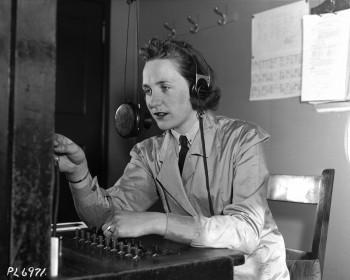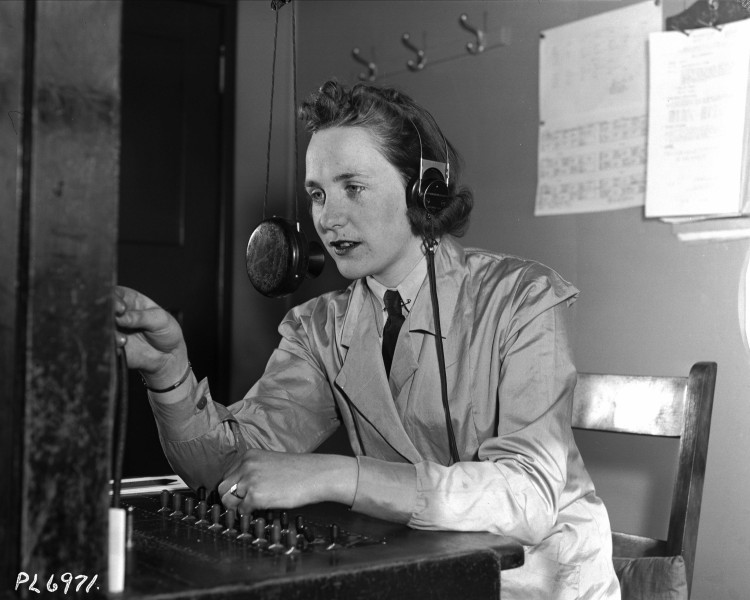Women’s History Month coming up in October will celebrate women’s contributions to the Canadian Forces, past and present.
This year’s theme, Women in Canadian Military Forces: A Proud Legacy, will focus on women who have done valuable work within and outside the military, taking on challenges and opening doors so that others may follow.
“The contributions of women form a rich and vibrant part of Canada’s proud military legacy. I encourage all Canadians to take this opportunity to learn their stories and recognize their contributions,” Rona Ambrose, Minister of Public Works and Minister for Status of Women, said in a release.
For more than 125 years, women have served the Canadian military in diverse roles—on the battlefield; as pilots, warship commanders, and peacekeepers; nurses and physicians; war artists and war correspondents; and in espionage and engineering.
The first women in Canada’s military served as nurses in the infamous Northwest Rebellion in 1885.
Following the Canadian nursing contingents that served in the Boer War as part of the Royal Canadian Medical Corps, nurses were admitted to the regular force in 1906.
World War I (1914-1918) saw women continue a prominent role in the medical corps, in many different capacities. It was also the first time that women formed paramilitary groups, undertaking training in small arms and many mechanics jobs, and preparing for the possibility of being called upon as home guards.
In World War II (1939-1945) approximately 5,000 nurses served in the Canadian Forces, and the Canadian government enrolled over 45,000 women volunteers for full-time military service other than nursing.
Women continued to serve in the years that followed, and in 1970 the Royal Commission on the Status of Women recommended changes in legislation geared toward providing a climate of equal opportunity for women.
Those recommendations included standardizing enrolment criteria, providing the opportunity for women to attend military colleges, and the termination of regulations prohibiting married women and women with children from enrolling in the military.
In 1982 the Charter of Rights and Freedoms was signed, prohibiting discrimination based on race, national/ethnic origin, colour, religion, sex, and disability.
By the late 1980s the inclusion of women in combat roles began to be seriously considered. The Combat Related Employment of Women (CREW) trials were initiated through which women were eventually able to qualify for all occupations within the Canadian Forces.
That was the starting point for complete integration of women into the Canadian Forces, and the deployment of women in combat.
Since the CREW trials, women have gone on to serve in many high-ranking military positions, including command chief positions, commanders of major warships, and for the first time, a woman in Afghanistan led an infantry company in a combat zone.
There are only 10 countries in the world that allow women to fight in ground combat, and Canada is one. The mission in Afghanistan marks the first time in Canadian history that women soldiers have fought on the front lines.
Activities will be taking place across Canada throughout October to promote the recognition and commemoration of women’s contributions to Canadian society.
This year’s theme, Women in Canadian Military Forces: A Proud Legacy, will focus on women who have done valuable work within and outside the military, taking on challenges and opening doors so that others may follow.
“The contributions of women form a rich and vibrant part of Canada’s proud military legacy. I encourage all Canadians to take this opportunity to learn their stories and recognize their contributions,” Rona Ambrose, Minister of Public Works and Minister for Status of Women, said in a release.
For more than 125 years, women have served the Canadian military in diverse roles—on the battlefield; as pilots, warship commanders, and peacekeepers; nurses and physicians; war artists and war correspondents; and in espionage and engineering.
The first women in Canada’s military served as nurses in the infamous Northwest Rebellion in 1885.
Following the Canadian nursing contingents that served in the Boer War as part of the Royal Canadian Medical Corps, nurses were admitted to the regular force in 1906.
World War I (1914-1918) saw women continue a prominent role in the medical corps, in many different capacities. It was also the first time that women formed paramilitary groups, undertaking training in small arms and many mechanics jobs, and preparing for the possibility of being called upon as home guards.
In World War II (1939-1945) approximately 5,000 nurses served in the Canadian Forces, and the Canadian government enrolled over 45,000 women volunteers for full-time military service other than nursing.
Women continued to serve in the years that followed, and in 1970 the Royal Commission on the Status of Women recommended changes in legislation geared toward providing a climate of equal opportunity for women.
Those recommendations included standardizing enrolment criteria, providing the opportunity for women to attend military colleges, and the termination of regulations prohibiting married women and women with children from enrolling in the military.
In 1982 the Charter of Rights and Freedoms was signed, prohibiting discrimination based on race, national/ethnic origin, colour, religion, sex, and disability.
By the late 1980s the inclusion of women in combat roles began to be seriously considered. The Combat Related Employment of Women (CREW) trials were initiated through which women were eventually able to qualify for all occupations within the Canadian Forces.
That was the starting point for complete integration of women into the Canadian Forces, and the deployment of women in combat.
Since the CREW trials, women have gone on to serve in many high-ranking military positions, including command chief positions, commanders of major warships, and for the first time, a woman in Afghanistan led an infantry company in a combat zone.
There are only 10 countries in the world that allow women to fight in ground combat, and Canada is one. The mission in Afghanistan marks the first time in Canadian history that women soldiers have fought on the front lines.
Activities will be taking place across Canada throughout October to promote the recognition and commemoration of women’s contributions to Canadian society.





